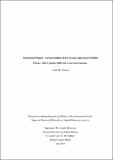Behavioural fluency: An investigation of instructional approaches to build fluency with academic skills and associated outcomes
Date
2014-07-11Author
Mc Tiernan, Aoife
Metadata
Show full item recordUsage
This item's downloads: 746 (view details)
Abstract
This thesis investigates the efficacy of instructional approaches designed to build fluency with mathematics skills, specifically, frequency-building, Precision Teaching (PT) and the Morningside Mathematics Fluency curricula. The impact of fluent performances on standardised measures of mathematical ability was examined, in addition to several critical learning outcomes associated with fluency. Analyses were further conducted to identify moderators of fluency-based instruction to inform the design and delivery of such instruction.
Frequency-building instruction was implemented with 14 participants (aged 9-11 years) in Chapter 2. A between-group design was used to evaluate the outcomes of the intervention targeting fluency with multiplication and division. Participants were matched with 14 control participants who received treatment as usual (TAU). The Experimental Group attained higher scores than the Control Group on measures of fluency with target skills and critical learning outcomes (i.e., endurance and stability) at post-testing. Increases in scores on a standardised assessment of mathematical ability were also observed for the Experimental Group only, with significant differences between groups at post-testing.
A between-group design was employed in Chapter 3 to evaluate frequency-building instruction in conjunction with PT to increase fluency with addition and subtraction. The intervention was implemented with 24 participants (aged 6-8 years) while the Control Group consisted of 18 participants, who received instruction with reading skills. Statistically significant differences between groups were found on measures of critical learning outcomes (i.e., endurance and application) at post-testing; however, no differences in scores were found on standardised measures of mathematical ability.
The findings in Chapters 2 and 3 indicated that individual differences, and the intensity at which instruction was delivered, potentially moderated the impact of the frequency-building interventions. Chapters 4 and 5 investigated the ability of individual differences and the intensity of frequency-building instruction to moderate outcomes of frequency-building mathematics skills with 71 participants (aged 6-12 years). Participant age, grade, processing speed ability and pre-intervention level of fluency with instructional materials were found to impact the ability to progress through frequency-building instruction. The findings are discussed in relation to the importance of matching fluency-based instruction to individual students' needs.


